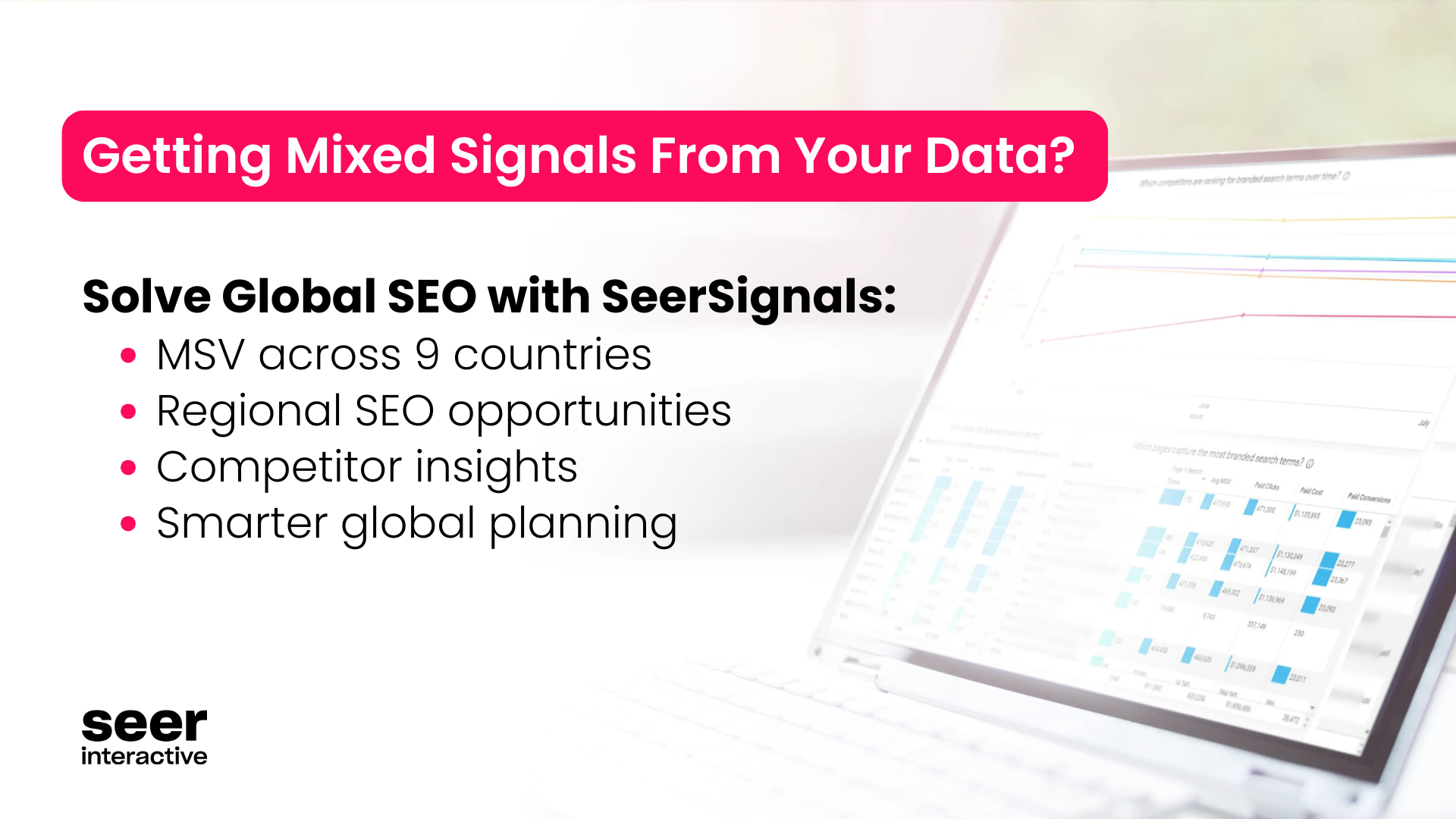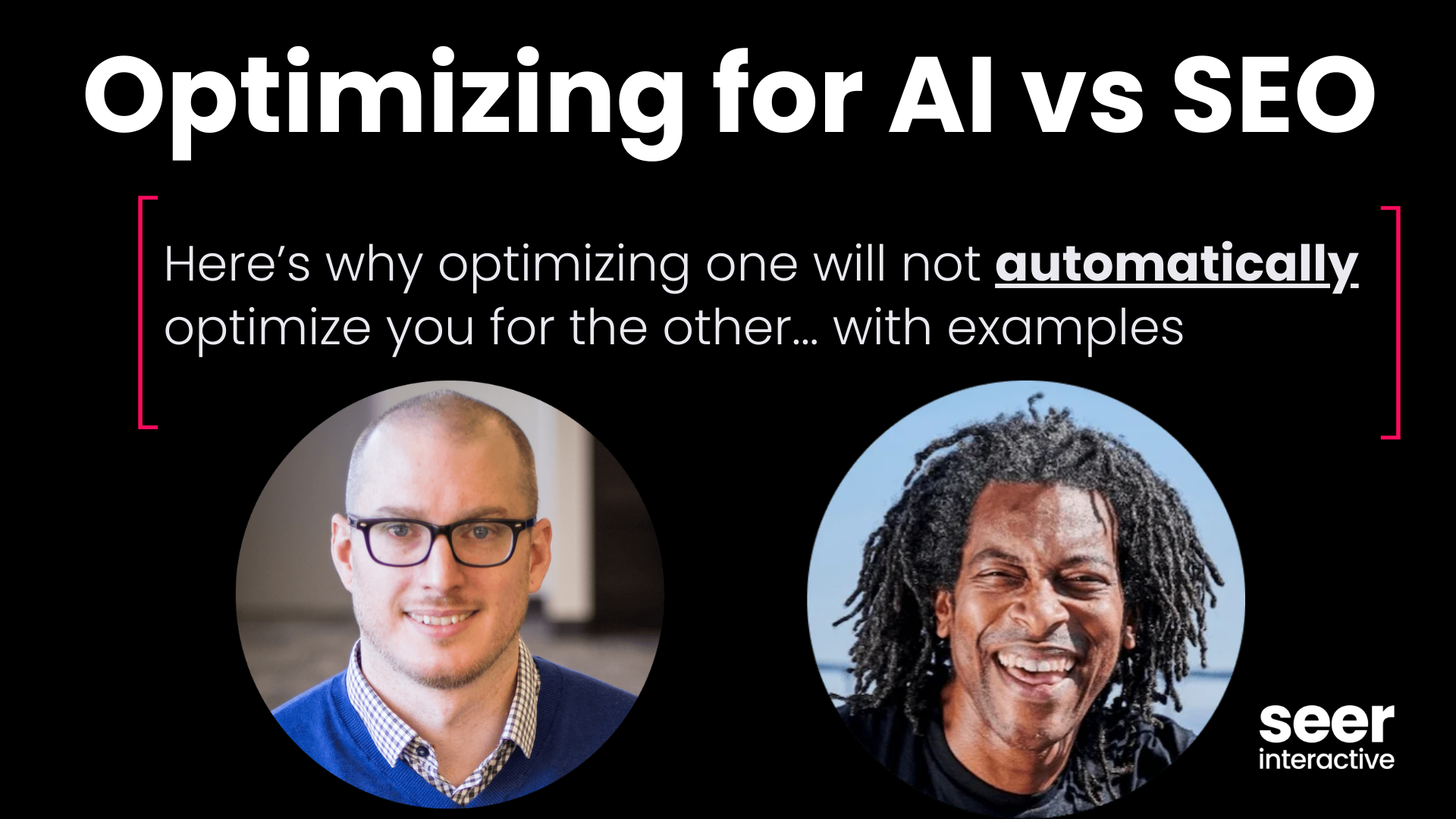Post originally written in May 2022. Updated in July 2024 by Anthony Schultes with SME input from Wil Reynolds, Jackie Schluth, Emily West, and Greg Smolarski
Search intent is the purpose of a person's search. It is sometimes known as user intent, audience intent, or query intent, regardless - it is the intent behind or the reason they typed specific terms into a search engine. When people type something into a search engine, they are looking for something and expect to find it. Discovering and meeting your audience's intent during every stage of the funnel is the job of a modern marketer.
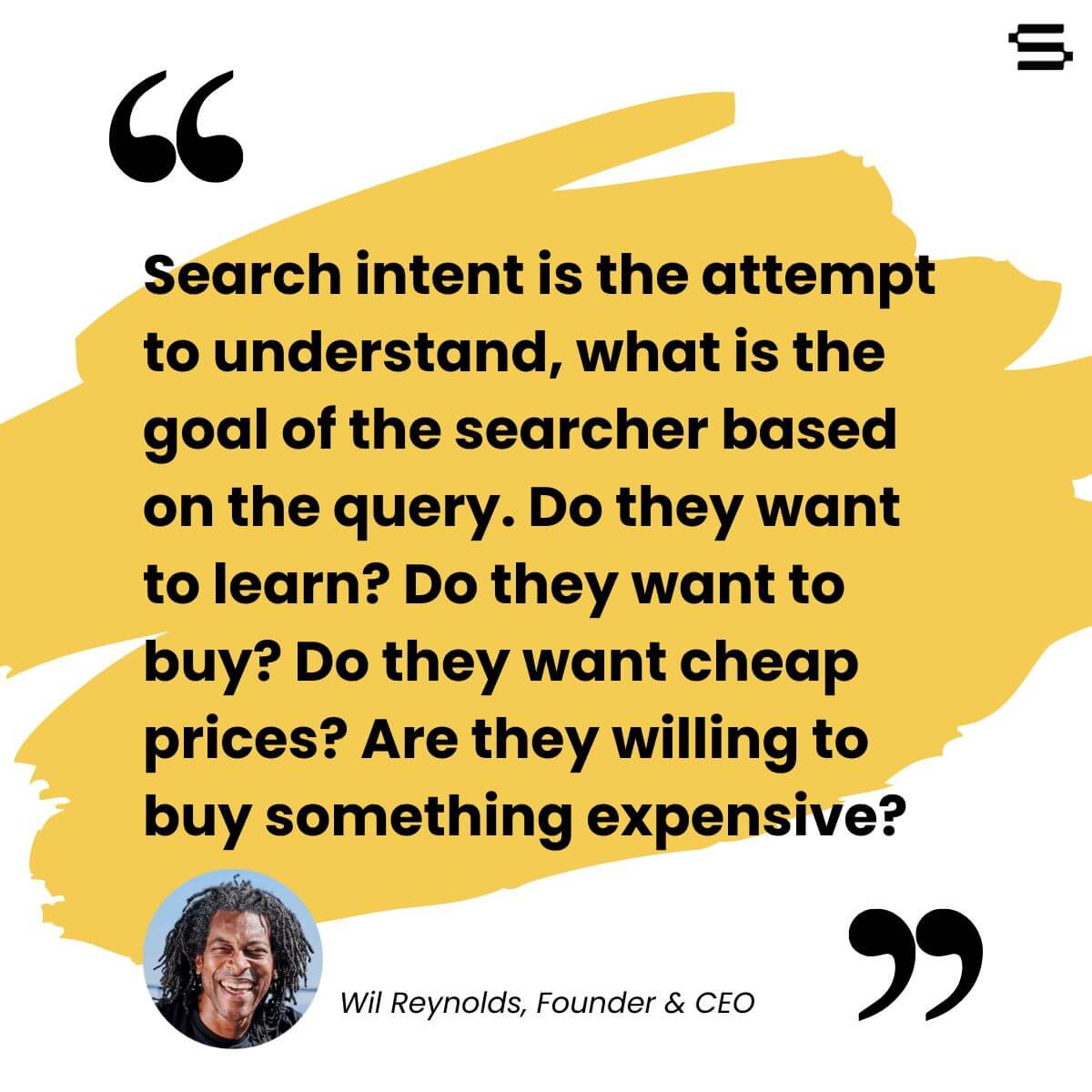
Understanding intent will help you to acquire more customers and improve a customer's lifetime value.
This article will give you a quick guide to understanding the different types of search intent, why each is relevant to your business, how to optimize for them, and how to analyze SERPs.
- Why Does Search Intent Matter
- Explaining Search Intent
- Types of Search Intent
- How to Determine Search Intent
- Search Intent and SEO
Why Does Search Intent Matter
Satisfying your users' search intent is arguably the most important thing to Google. Google strives to provide each person who searches with the most relevant and useful answer. The success of their entire business depends on this. If people are not satisfied with their results after searching, they will go to another search engine.
If you want to rank high on search engine results pages (SERPs), you must understand your audience's search intent and strive to create content that aligns with their needs.
Explaining Search Intent
Explaining search intent to someone or a group of people that don’t work in search everyday can be difficult. Especially when the need for an explanation is often sprung from the question, “Why aren't we ranking for x, y, and z?”
When Jackie Schluth, Sr. SEO Manager, once got this question, here is how she broke it down.
We once had a client that was very adamant about ranking for [term]. The search volume was large and we knew that SERPs were going to be very competitive. Since the opportunity was so great, they wanted their product page to rank for this term so it could drive more conversions.
So, we walked them though the SERP for that term and otherx related to it. It was obvious to us that they had educational intent; people searching this term wanted to learn more about it and educate themselves, they were not looking to purchase a product just yet.
But they understood it much better when we clicked on the tops results and walked through what style of content was ranking the best and why it was the most helpful, almond with explaining other factors that played a role as well.
This opened the door for us to discuss competitors’ strategies at a larger scale and, ultimately, helped determine how we could differentiate ourselves.
Types of Search Intent
There are four types of user search intent:
- Informational - Someone looking to find general/high-level information
- Commercial - Someone who is interested or knows what they want and is looking for more detailed information
- Transactional - Someone who has decided to act and is looking for a particular specification
- Navigational - Someone looking for information from a specific thing or place
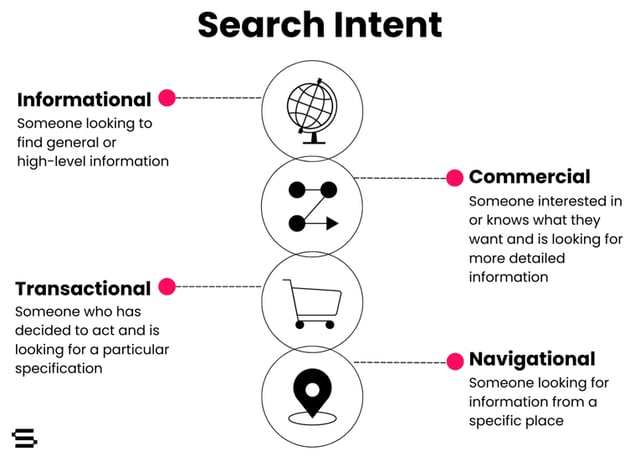
Search Intent vs. Solution Intent
Historically, searches can fall within 1 of these 4 buckets, but as user behavior and search engines evolve with AI, it may be time to stop thinking this narrowly. As one of our SEO Team Leads, Emily West, says, “As user behavior is shifting and searchers are starting to learn how to use generative AI tools, we're going to see shifts in intent. In the future, instead of looking at search intent, we'll be looking at prompt intent, such as, is the user commanding a gen AI engine to do something? Is it for a recommendation? Are they looking for a comparison? There will be a lot of different frameworks that we'll need to think through based on how user search intent changes with the advent of AI.
Informational Search
Information intent explained, including examples
Informational search intent keywords come from someone looking to learn something. High-funnel consumers make the most informational searches. High funnel, meaning potential consumers who have not made up their minds yet, and are just beginning to look for information.
Informational queries often cover broad topics. You can think of these queries as potential starting points, and some popular starting points/informational searches include the modifiers:
- Who
- What
- When
- How
- Guide
- Tips
💡 Queries can always range from simple (how old is brad pitt) to complex (composition of black holes).
For more straightforward questions, Google will frequently include a featured snippet answer box or a knowledge graph in the SERP to give you an answer quickly.
The screenshot below showcases an example of informational search intent.
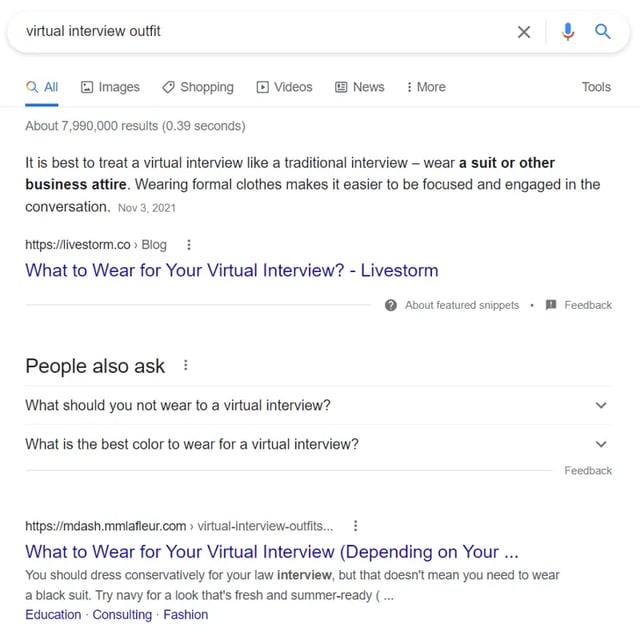
Why informational intent audiences are pertinent to your bottom line
Awareness is the first step. Because high-funnel consumers often make informational intent searches, consider if high-funnel marketing is important to your business.
For many, high-funnel marketing practices are where a company makes its first impression. High funnel tactics are often about getting your name out in front of potential consumers at the right time and in the right place.
If you do not target high-funnel consumers in some of the ways we mention below, you will risk them never learning about your brand or your products and services.
How to optimize for informational search intent
Pay close attention to what people are looking for when targeting keywords with an informational intent and create or optimize content in the correct format.
Blogs, FAQs, and How-Tos are all popular content types and formats that often target high-funnel consumers. These forms of content align with informational keyword search intents because they are highly educational.
Blogs, for example, allow you to create/optimize posts for informational purposes because they are inherently informational. Blogs also allow you to build trust with your audience and become an authority in your industry (and with search engines).
Here is an example of an article that ranks for virtual interview outfit:
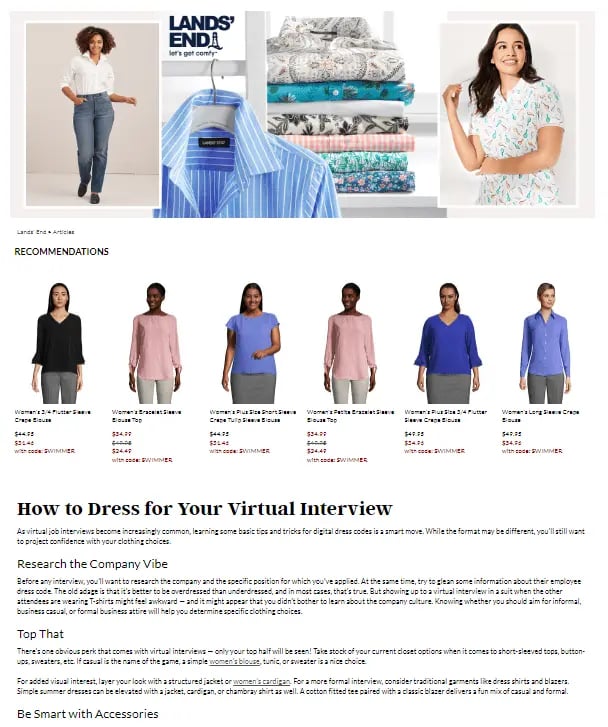
Commercial Search
Commercial intent explained, including examples
Commercial search intent keywords come from someone considering investing in something. High-to-mid funnel consumers often make these types of searches -- as these people know about a specific product or service and want to learn more about it and others like it.
Results that appear for commercial queries frequently cover multiple topics, or product features more detailedly. Examples of commercial intent keyword modifiers include:
- Best
- Vs.
- Top
- Review
The screenshot below showcases an example of commercial search intent.
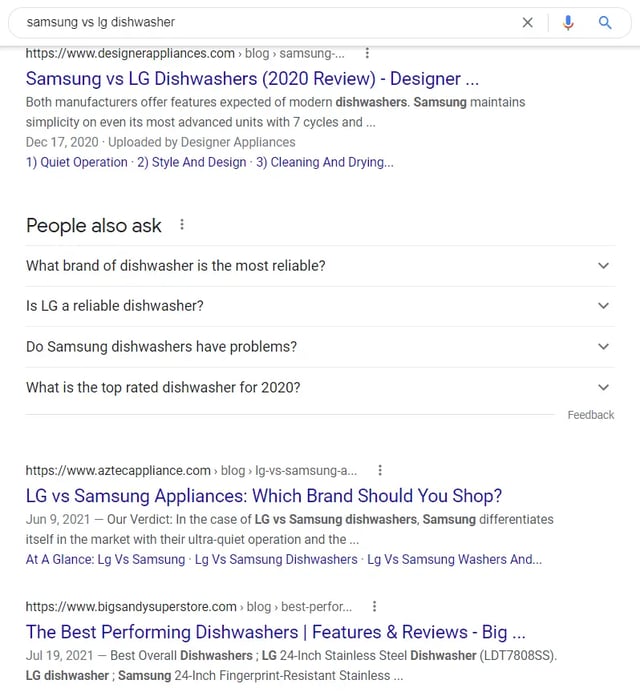
Why commercial intent audiences are pertinent to your bottom line
Decisions lead to conversions. Someone looking for information about a product or service, and comparing them with others, is more likely to convert. Putting yourself in front of a mid-funnel consumer and effectively giving them the information they are looking for will help them convert.
If you aren't targeting commercial keywords, you are missing out on opportunities to get in front of the consumers who are most likely to convert. Ultimately, that is revenue you are NOT gaining.
How to optimize for commercial search intent
Much like informational keywords, you must know what information someone is looking for when targeting commercial keywords.
Products, solutions, services, or blogs are often the landing pages that rank high on SERPs for these queries. These content types align with the user's intent to discover more about a product or service and/or to learn why they might want to purchase it over others.
Aggregator websites, sites that gather information from other sources and organize it in one place, frequently appear in SERPs for these types of queries. We can infer that this happens because most users (and, in turn, Google) view them as the most reliable source when it comes to these matters.
💡 Think of it this way: If you are looking to buy a new dishwasher and you have your decision narrowed down to brand A and brand B, would you go to brand A's website to see how it directly compares to B? Or would you go to a third-party website (that isn't trying to sell you a TV, or at least trying to sell you both) for a direct comparison?
Here is an example of an article that ranks for samsung vs lg dishwasher:
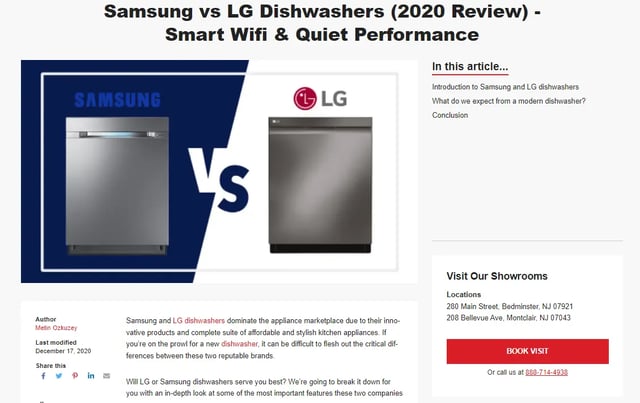
Transactional Search
Transactional intent explained, including examples
Transactional search intent keywords come from someone ready to act! People making a transactional search are low-funnel, meaning they know what they want and are nearly prepared to convert.
These modifiers can be a telltale sign of a transactional query:
- Cheap
- Coupon
- Buy
- Order
Depending on the product or service someone is searching for, local results can be prevalent in SERPs for transactional searches. This happens because, in most cases, it is what would be the best experience for a user.
The screenshot below showcases an example of transactional search intent.
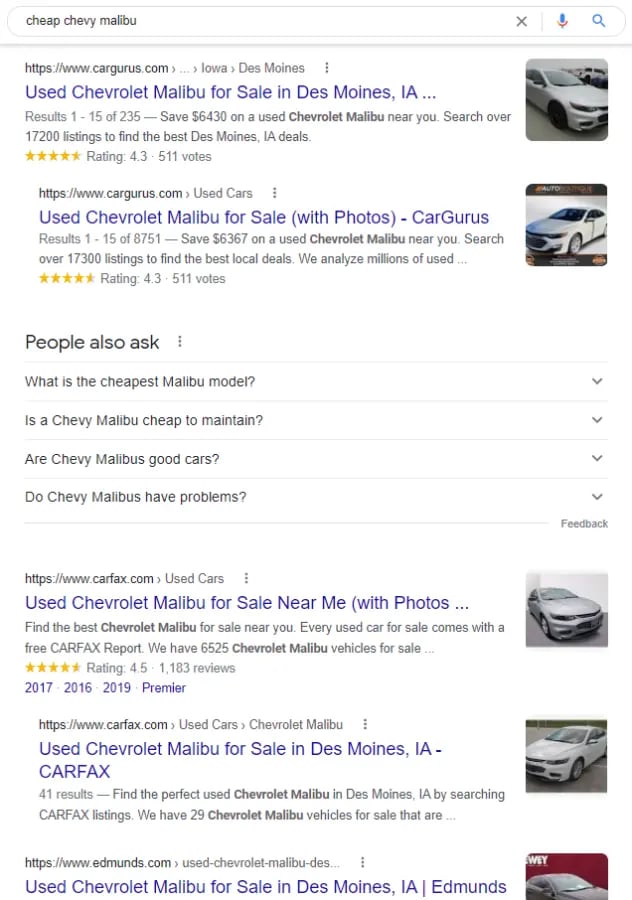
Why transactional intent audiences are pertinent to your bottom line
Be there when people want to convert. Transactional intent-based users are looking to take action, and if they can not find you with these types of searches, you are missing out on a conversion.
How to optimize for transactional search intent
Including transactional keywords on web pages is essential, especially on product landing pages. These pages often meet the user's intent so well because it is where they will make a transaction. If you can make that experience seamless, you might earn a returning or referral business.
Regardless of which page you optimize for transitional keywords, it would help if you were using transactional language throughout your website. Transactional language encourages users to take action, whether by clicking through to a form fill, sharing a post, or making a purchase.
💡 Learn about improving e-commerce page design from our Creative team.
Here is a product listing page that ranks for cheap chevy malibu in my area:
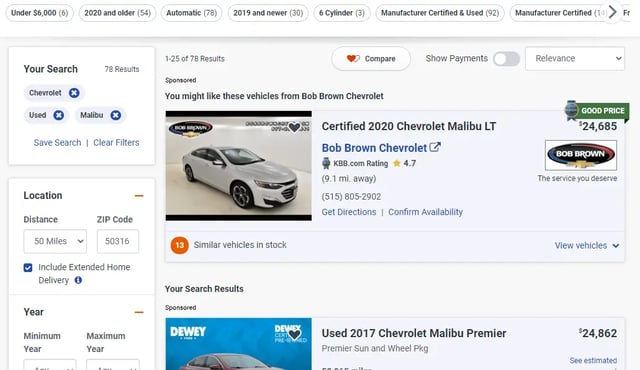
Navigational Search
Navigational intent explained, including examples
Navigational keywords come from someone looking for a specific thing (website, product, social media account, address, phone number, hours, etc.).
There are not any specific query modifiers to highlight for transactional searches because of their specification. This is best demonstrated with examples:
- Logitech mouse
- McDonald's
- Target hours
- Peloton
People making navigational searches vary within the sales funnel; someone could be searching for a brand name at any point. Each of those examples demonstrates this.
Someone searching Logitech mouse could be ready to buy a new Logitech computer mouse, or they could just want to find more information about them. Someone who searches McDonald's could wish to drive to the nearest McDonald's, or they could want to go to their website.
Why navigational intent audiences are pertinent to your bottom line
Navigational queries drive action. People with navigational intent are ready to take action, whatever that might be.
They are looking for something specific, so if they are looking for your brand, you are in luck -- if they aren't, you might not rank as well. It could be argued that high-funnel marketing and digital PR dive many navigational queries.
How to optimize for navigational search intent
First-party domains often rank well and receive the best click-through rates for navigational searches because they are the most relevant to people.
💡 Think, if you are searching for Apple, to get to their website, why would you go to another website?
Maintaining the overall technical health of your website and enacting a holistic SEO strategy will help you earn the top spots for navigational searches relevant to your brand and business. It is also important to mention that answer boxes and local packs are prevalent in many location-based transactional intent searches because they provide people with a quick relevant answer.
To win some of these features, keep all relevant business listings up-to-date. See the screenshot below for an example.
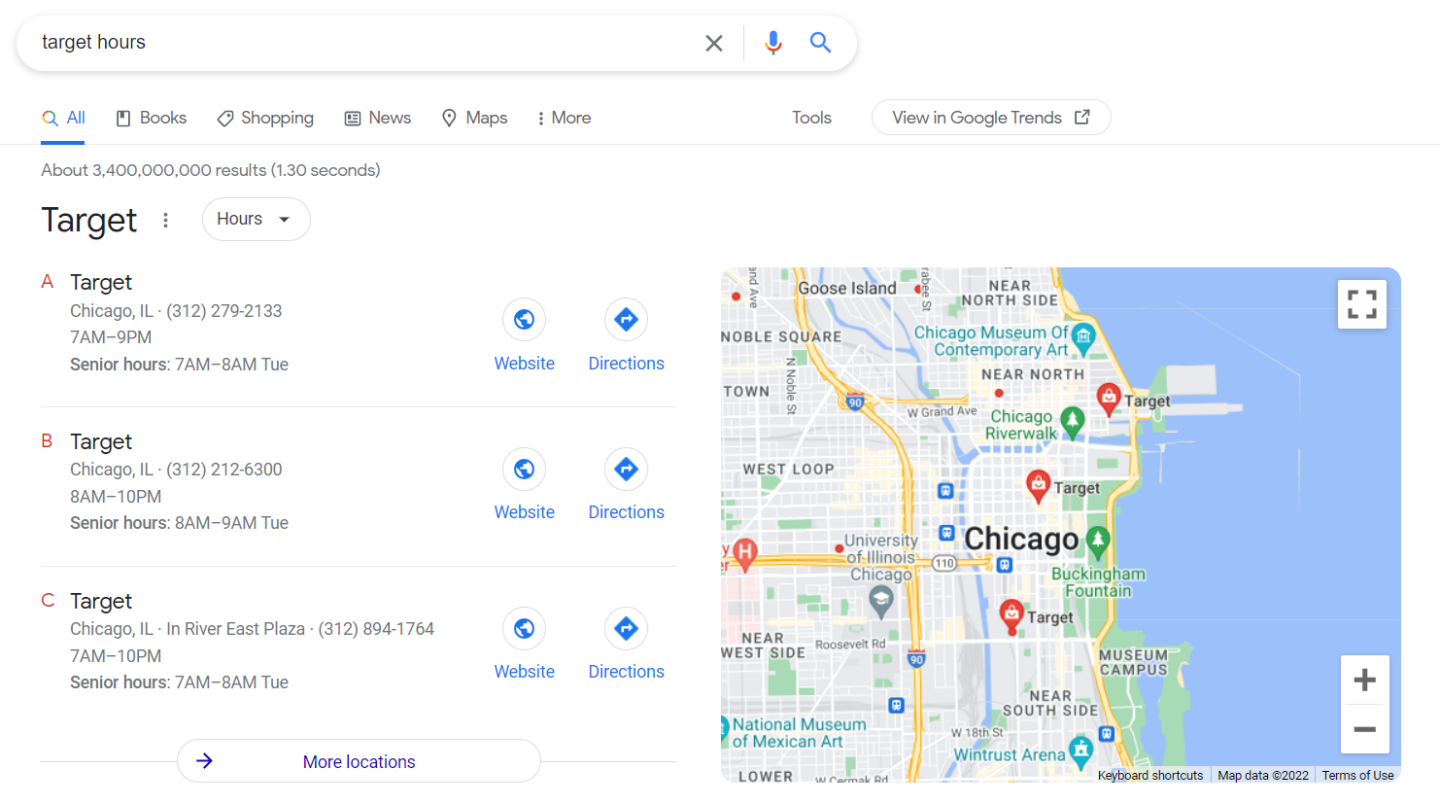
How to Determine Search Intent
Determining the intent of every single query your site might rank for is fluid; it changes from person to person and situation to situation. The exact keyword could be used by two different people with two different intents.
Someone searching Titleist (a popular brand of golf equipment) could have just heard the name and is trying to see what they do. Another person could be looking for a new putter and want to shop on their website. The first person is trying to see what Titleist means and what they do has an informational intent. The other trying to shop on their website has a navigational purpose.
However, specifying which keywords could be used by people with varying intents is vital to understand in coordination with your website's architecture and when determining keyword governance.

Use the following sections to help guide you and determine search intent.
Calculating Search Intent Through SERP Features
Making a note of or tracking search engine results page (SERP) features can help you determine search intent. Here is how different SERP features can connect with different intents
|
Intent |
Definition |
SERP Features |
|
Informational |
Someone looking to find general/high-level information |
Answer Boxes/Featured Snippets, Calculator, Dictionary, Interesting Finds, Knowledge Graph, News, Recipes, Salary Pack, Track a Package, Unit Converter |
|
Commercial |
Someone who is interested or knows what they want and is looking for more detailed information |
Popular Products, Refine By |
|
Transactional |
Someone who has decided to act and is looking for a particular specification |
Directions, Events, Job Pack, Local, Map Results, Shopping Box |
|
Navigational |
Someone looking for information from a specific thing or place |
Sitelinks |
|
N/A |
These SERP features do not indicate a specific intent |
Ads, Guided Search Filters, Image, Organic, People Also Ask (PAA), People Also Search For, Podcasts, Related Searches, Sitelinks, Video |
Utilizing Audience Research
Another great way to help determine intent, especially for the terms you are most interested in, is turning to audience audience data. As Gregory Smolarski, Sr. SEO Associate, puts it, “I think the best, way to go about understanding search intent is utilizing actual consumers and understanding their journey, and understanding how they interpret queries, because that's the effort of search engines, to align with how consumers are thinking.”Reviewing the 3 C’s of Search Intent
Whether you are reviewing SERPs or audience data, we recommend doing so with these questions in mind to help you discover who is getting rewarded.
- Content type - What type of pages are ranking on page 1? Blog posts, product pages, homepages, service pages, etc.
- Content format - How are these pages formatted? Guides, how-to, listicle, product and description, images-heavy, etc.
- Content angle - What angle do these pages take? What makes them different or unique? What makes them different or unique? Do they include an opinion or hypothesis, or are they more particle and straightforward?
In Review
Best Practices for How to Fulfill Search Intent
- Informational - Give them general/high-level information so they can choose to learn more or not
- Commercial - Give them more detailed or comparative information to help them make a decision
- Transactional - Give them that particular thing they are looking for so they can act
- Navigational - Give them information from the right place
Search Intent and SEO
Aligning your content strategy with search intent is critical for both your target audience and search engines.
✔️ Ensure that you answer relevant questions and provide helpful information when people are looking for information.
✔️ Help those making a decision make the best decision for themselves.
✔️ Trust that your offerings are worthy of earning customers over time by leading them in the right direction.
All of this can be achieved with a comprehensive SEO strategy, but understanding search intent is just the beginning. Additional keyword research and audience insights must be obtained over time to build a plan to help you achieve business goals.


